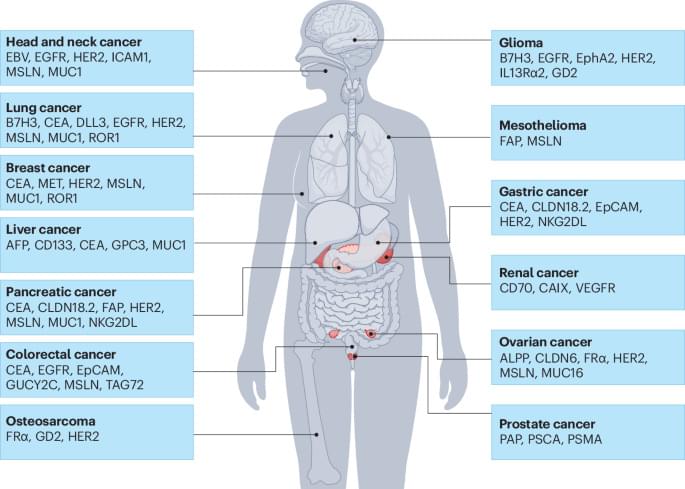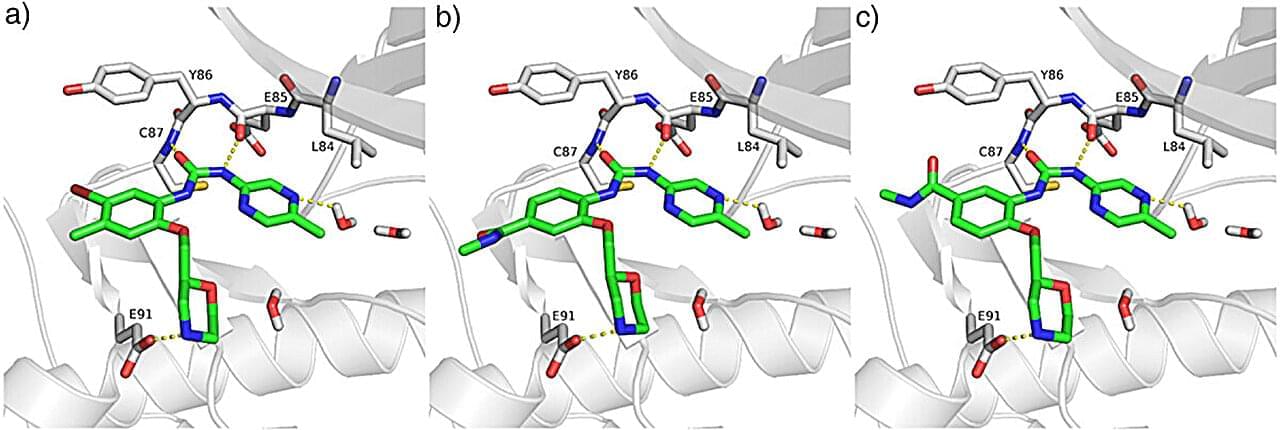Hugging Face co-founder and CEO Clem Delangue says all the attention is on LLMs, but smaller, specialized models will make sense in many use cases going forward.



Chimeric antigen receptor (CAR) T cell therapy is revolutionizing the treatment of haematological malignancies, but expanding applicability to solid tumours presents substantial challenges. This Review describes key strategies to optimize CAR T cell therapy for solid tumours across areas spanning from target selection to response and safety evaluation.
Anchorage-dependent cells are cells that require physical attachment to a solid surface, such as a culture dish, to survive, grow, and reproduce. In the biomedical industry, and others, having the ability to culture these cells is crucial, but current techniques used to separate cells from surfaces can induce stresses and reduce cell viability.
“In the pharmaceutical and biotechnology industries, cells are typically detached from culture surfaces using enzymes—a process fraught with challenges,” says Kripa Varanasi, MIT professor of mechanical engineering. “Enzymatic treatments can damage delicate cell membranes and surface proteins, particularly in primary cells, and often require multiple steps that make the workflow slow and labor-intensive.”
Existing approaches also rely on large volumes of consumables, generating an estimated 300 million liters of cell culture waste each year. Moreover, because these enzymes are often animal-derived, they can introduce compatibility concerns for cells intended for human therapies, limiting scalability and high-throughput applications in modern biomanufacturing.

A new active substance attacks a key protein in tumor cells, leading to complete degradation. In cell experiments, this caused cancer cells to lose their protection and die. The active substance was developed by researchers at the Martin Luther University Halle-Wittenberg (MLU) and the University Medical Center Mainz. Other substances usually try to inhibit the activity of the protein “checkpoint kinase-1” (CHK1). However, if the protein is completely broken down, a chain reaction is triggered which leads to other tumor proteins being destroyed. Thus, the cancer cells are further weakened.
The new study was published in Angewandte Chemie International Edition.
Usually, CHK1 is a vital protein for the human body. If errors occur during cell division and the genetic material is damaged, the protein halts the process so that the cell can repair it before proceeding. However, the protein does not distinguish between normal cells and tumor cells—it protects them equally.

The central clock drives metabolic rhythms in muscle stem cells.
Sica et al. show that the circadian clock in the brain controls daily rhythms in muscle stem cells. These rhythms affect stem cell metabolism and repair capacity, even in the absence of a local clock. The findings reveal how central signals shape tissue-specific stem cell functions through systemic cues like feeding.

The Water Authority has started channeling desalinated water to the Sea of Galilee, marking the first ever attempt anywhere in the world to top up a freshwater lake with processed seawater.
The groundbreaking project, years in the making and a sign of both Israel’s success in converting previously unusable water into a vital resource and the rapidly dropping water levels in the country’s largest freshwater reservoir, was quietly inaugurated on October 23…
… Firas Talhami, who is in charge of the rehabilitation of water sources in northern Israel for the Water Authority, told The Times of Israel that he expected the project to raise the lake’s level by around 0.5 centimeters (0.2 inches) per month.

Cloud cover is bad for picnics and for viewing stars through a telescope. But an exoplanet with dense or even total cloud cover could help astronomers search for signs of life beyond our planet.
Cornell researchers have created the first reflectance spectra—a color-coded key—of diverse, colorful microorganisms that live in the clouds floating above Earth’s surface. Astronomers don’t know if these bacteria exist elsewhere in the universe and in enough abundance to be detected by telescopes; on Earth they are not. But now, astronomers can use the color key in the search for life outside our world—making an exoplanet’s clouds, in addition to its surface and air, a promising realm for finding signs of life.
“There is a vibrant community of microorganisms in our atmosphere that produce colorful biopigments which have fascinated biologists for years,” said astrobiologist Ligia Coelho, 51 Pegasi b Postdoctoral Fellow in astronomy in the College of Arts and Sciences (A&S) and fellow at the Carl Sagan Institute (CSI). “I thought astronomers should know about them.”

A research team at the Jülich Supercomputing Center, together with experts from NVIDIA, has set a new record in quantum simulation: for the first time, a universal quantum computer with 50 qubits has been fully simulated—a feat achieved on Europe’s first exascale supercomputer, JUPITER, inaugurated at Forschungszentrum Jülich in September.
The result surpasses the previous world record of 48 qubits, established by Jülich researchers in 2022 on Japan’s K computer. It showcases the immense computational power of JUPITER and opens new horizons for developing and testing quantum algorithms. The research is published on the arXiv preprint server.
Quantum computer simulations are vital for developing future quantum systems. They allow researchers to verify experimental results and test new algorithms long before powerful quantum machines become reality. Among these are the Variational Quantum Eigensolver (VQE), which can model molecules and materials, and the Quantum Approximate Optimization Algorithm (QAOA), used for optimization problems in logistics, finance, and artificial intelligence.
Lex Fridman Podcast full episode: https://www.youtube.com/watch?v=YDjOS0VHEr4
Please support this podcast by checking out our sponsors:
- LMNT: https://drinkLMNT.com/lex to get free sample pack.
- NetSuite: http://netsuite.com/lex to get free product tour.
- BetterHelp: https://betterhelp.com/lex to get 10% off.
GUEST BIO:
Neil Gershenfeld is the director of the MIT Center for Bits and Atoms.
PODCAST INFO:
Podcast website: https://lexfridman.com/podcast.
Apple Podcasts: https://apple.co/2lwqZIr.
Spotify: https://spoti.fi/2nEwCF8
RSS: https://lexfridman.com/feed/podcast/
Full episodes playlist: https://www.youtube.com/playlist?list=PLrAXtmErZgOdP_8GztsuKi9nrraNbKKp4
Clips playlist: https://www.youtube.com/playlist?list=PLrAXtmErZgOeciFP3CBCIEElOJeitOr41
SOCIAL:
- Twitter: https://twitter.com/lexfridman.
- LinkedIn: https://www.linkedin.com/in/lexfridman.
- Facebook: https://www.facebook.com/lexfridman.
- Instagram: https://www.instagram.com/lexfridman.
- Medium: https://medium.com/@lexfridman.
- Reddit: https://reddit.com/r/lexfridman.
- Support on Patreon: https://www.patreon.com/lexfridman
Youtube caption.
On 11th of December 2025, Michael Levin gave a talk as part of the ECogS Conference hosted by The Embodied Cognitive Science Unit at OIST.
Title: Unconventional Embodiments: model systems and strategies for addressing mind-blindness.
Abstract: One of the most salient aspects of any agent’s environment is the question of how many, what kind, and what degree of agency exists in it. It is as relevant to biological organisms as to robots in human environments. It is also critical for scientists, philosophers, and engineers, as well as for human societies which will increasingly contain modified, synthetic, and hybrid beings of every possible description. In this talk I will argue that our evolutionary history has left us with significant mind-blindness, which makes it difficult for us to recognize minds of unfamiliar scales, problem spaces, or embodiments. I will describe our lab’s work to develop conceptual tools for recognizing and communicating with diverse intelligences. I will also present recent data from our new synthetic proto-organisms, in which we test those ideas by creating and studying the behavioral properties of beings who have not been specifically selected for them. I will conclude the talk with a speculative idea about the latent space from which novel intrinsic motivations ingress into physical, biological, and computational systems.